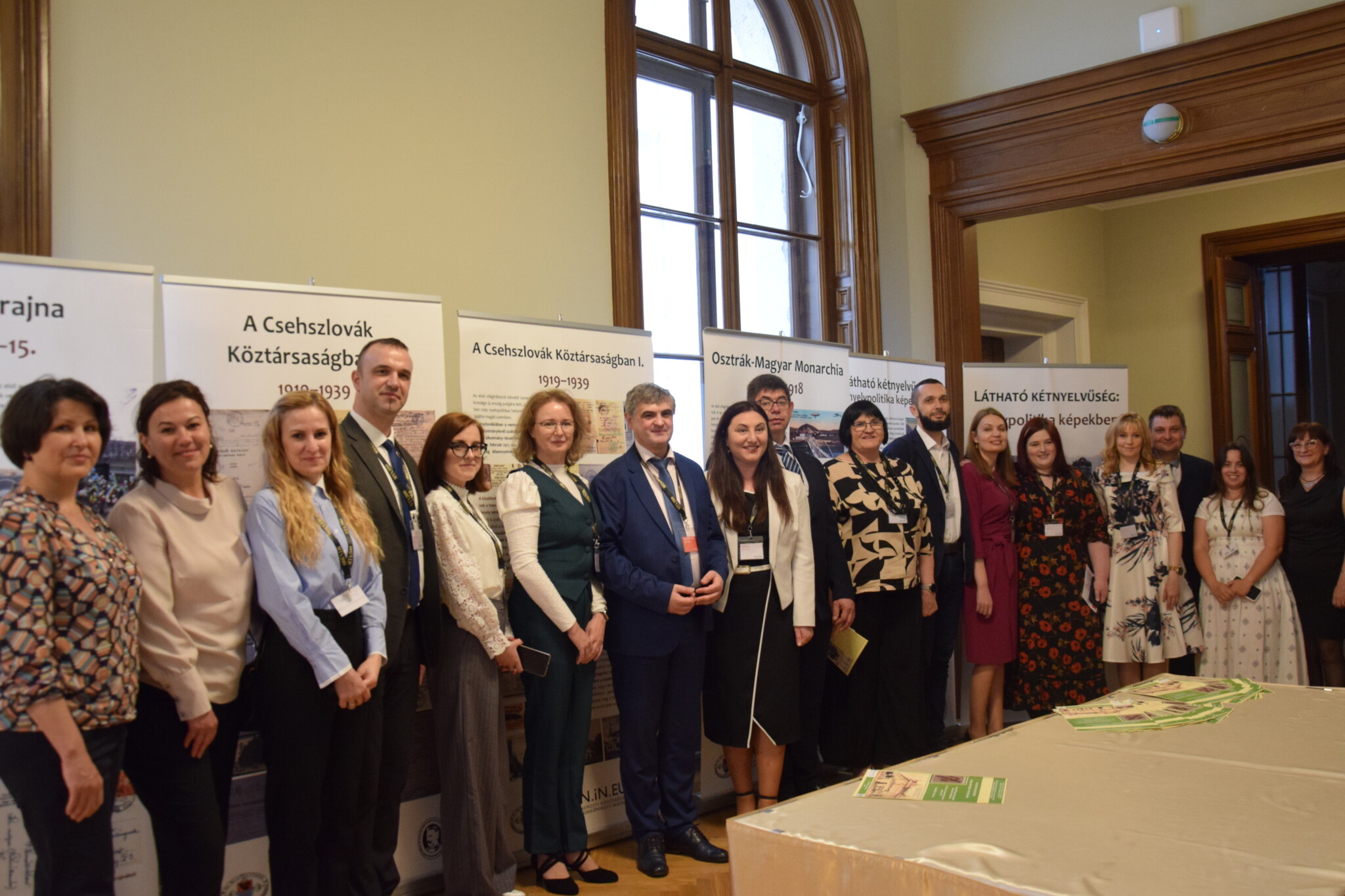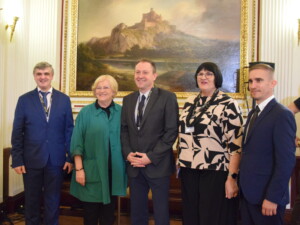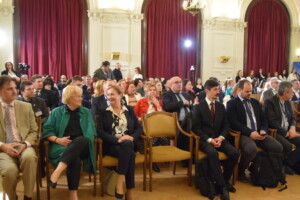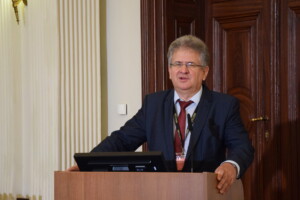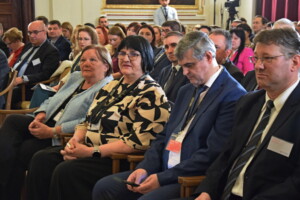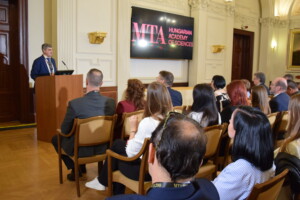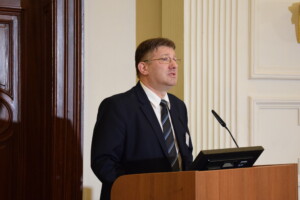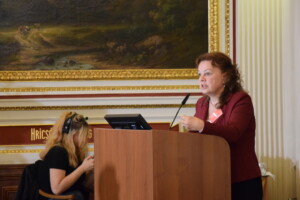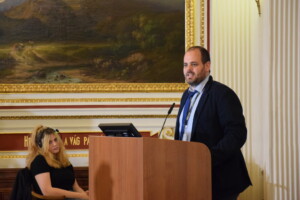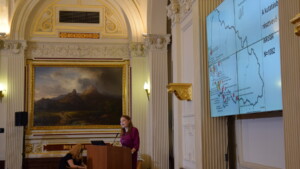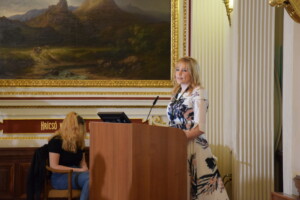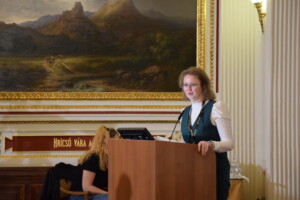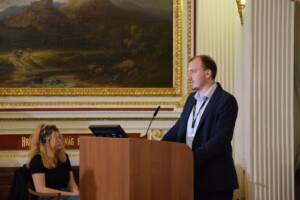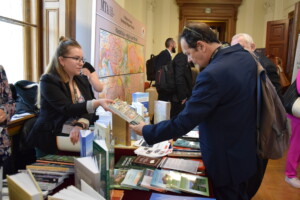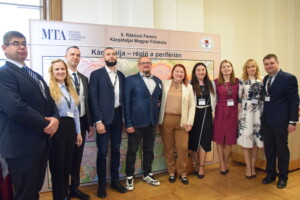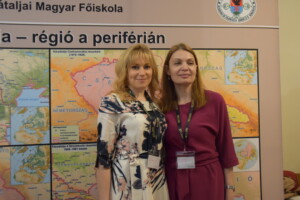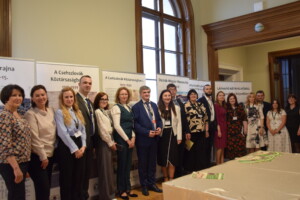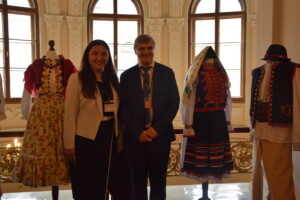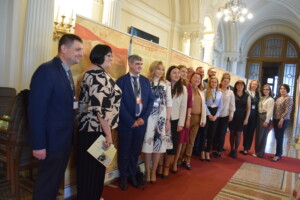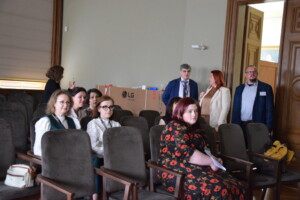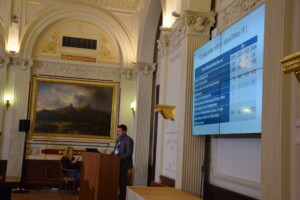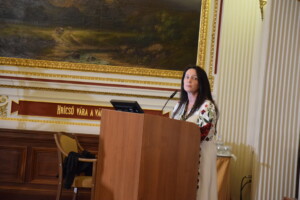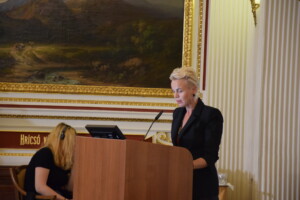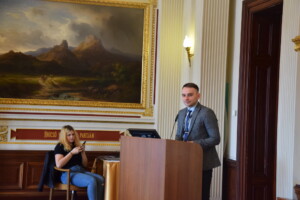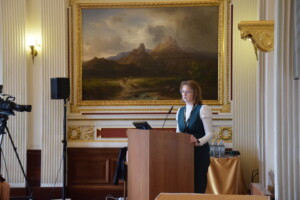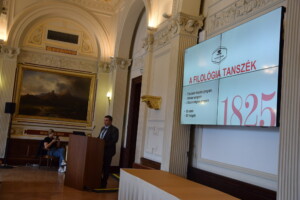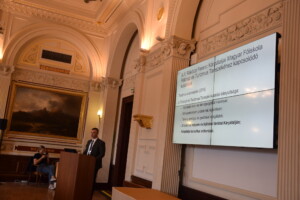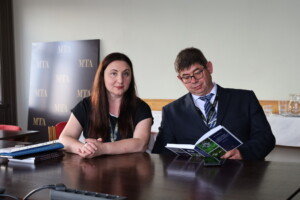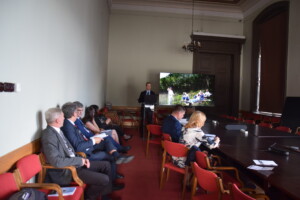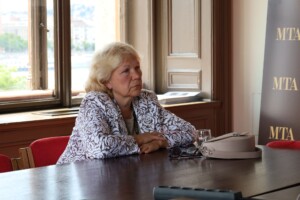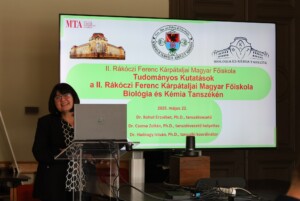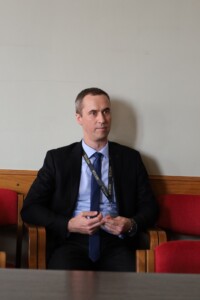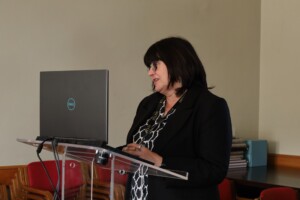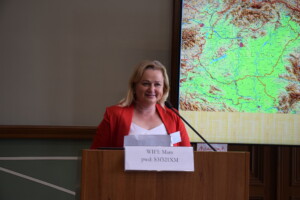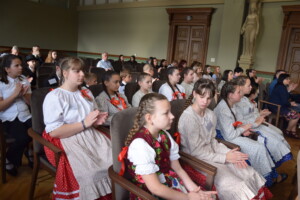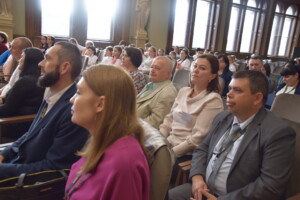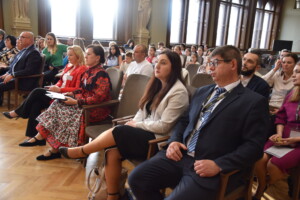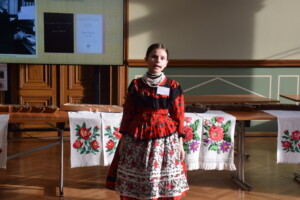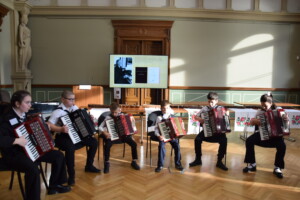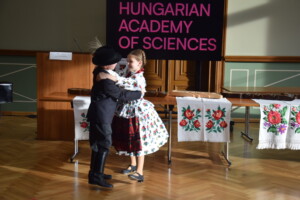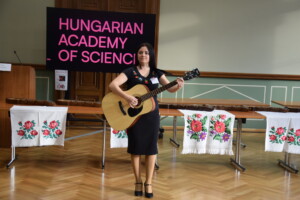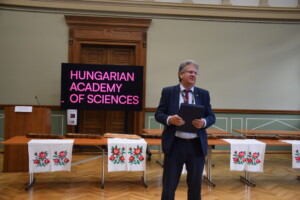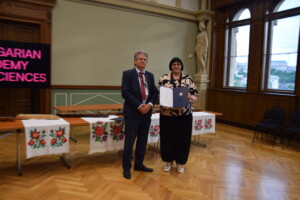MTA 200 – Transcarpathia presented at a scientific conference
On May 22, Transcarpathia was introduced at a scientific conference held as part of the Hungarian Academy of Sciences’ (MTA) 200th anniversary celebration series, during the festive month dedicated to Hungarian scientific institutions and organizations beyond the borders. At the event in Budapest, representatives of the Ferenc Rákóczi II Transcarpathian Hungarian College of Higher Education presented the current state of higher education in the region, its main research directions, as well as the role of Hungarian science and culture in Transcarpathia.
The audience was welcomed by Károly Kocsis, full member of the Hungarian Academy of Sciences.
“That act which took place two hundred years ago has led us to the point where today we can celebrate Hungarian science together. By now, nearly two thousand individuals from beyond Hungary’s borders have joined the ranks of academicians, and the work of Transcarpathian scholars is of outstanding quality,”
he said.
István Csernicskó, Rector of the Ferenc Rákóczi II Transcarpathian Hungarian College of Higher Education and External Member of the Hungarian Academy of Sciences, emphasized that in addition to celebrating the 200th anniversary of the MTA, we are also marking the 10th anniversary of the Transcarpathian Hungarian Academic Council.
“Celebrating together with Hungarian researchers from Transcarpathia not only symbolizes the networked nature of science, but also shows that the Academy is truly the academy of the nation,”
he added.
“Opportunity makes the thief – as the saying goes. I believe it not only makes the thief, but the scientist as well, since without the right conditions for research, a scientist cannot truly thrive,” emphasized Ildikó Orosz, President of our college, who expressed her gratitude on behalf of all Hungarian researchers from Transcarpathia for the opportunity to celebrate together today.
Following the welcome speeches, the event continued with a lecture series titled Competence–Education–Balance–Perspective (KOMP). During the morning session, the presenters — Ildikó Orosz, István Csernicskó, Gabriella Pusztai, Attila Papp Z., János Dugasz, Katalin Pallay, Kornélia Hires-László, Erzsébet D. Molnár, Andrea Pősze, and Ádám Daróczi — highlighted the state of Hungarian-language education in Transcarpathia, the right to mother-tongue education, the implementation of competence assessments in Transcarpathia, and the results of the KOMP project.
This was followed by the opening of the poster exhibition Transcarpathia – A Region on the eriphery, introduced by Natália Váradi, Associate Professor at the Department of History and Social Sciences. The exhibition was presented by István Molnár D., Associate Professor at the Department of Geography and Tourism, while Gyula Fodor, Vice-Rector of the Rákóczi College, gave an overview of the college and its partner institutions, Hungarian literature in Transcarpathia was discussed by László Csordás, Gabriella Mádi, and Adél Gál, Associate Professors at the Hungarian Branch of the Department of Philology. Transcarpathia’s biodiversity was presented by Erzsébet Kohut, Head of the Department of Biology and Chemistry, and István Kolozsvári, Director of the István Fodor Natural Science Research Center. The College’s Mineral and Rock Collection was introduced by Sándor Gönczy and Marianna Székely, Associate Professors at the Department of Geography and Tourism.
The sights of Beregszász were presented to the audience by Enikő Sass, Associate Professor at the Department of Geography and Tourism. The geological values of Transcarpathia were introduced by Natália Oláh, lecturer at the same department. The portrait gallery of Transcarpathian mathematicians was presented by Katalin Kucsinka, Head of the Department of Mathematics and Informatics, while the Transcarpathian scholars were discussed by György Dancs, Associate Professor at the Department of History and Social Sciences. The hardships of the malenkij robot were explained by Erzsébet Molnár D., Associate Professor at the Department of History and Social Sciences. Bilingualism in Transcarpathia was addressed by Kornélia Hires-László and Réka Máté, Associate Professors at the Hungarian Branch of the Department of Philology. Finally, the Transcarpathian aspects of the 1956 Hungarian Revolution were presented by Natália Váradi.
Following the exhibition, the scientific conference continued with a session titled The Structural transformation of Transcarpathia’s economy as a consequence of the war. The presenters — Róbert Bacsó, Gábor Pataki, Gabriella Loszkorih, Andrea Huszár, Nina Pojda-Noszik, Veronika Hanuszics, and Edina Sebestyén — addressed the economic aspects of administrative reform, the development of the SME sector, changes in Ukraine’s tax system, the situation of microenterprises in Transcarpathia, and the socio-economic conditions of small regions in the area.
In the afternoon, the lecture series titled Social science research in Transcarpathia and Natural sciences in Transcarpathia followed, where the presenters showcased topics including language accessibility in Transcarpathia, various philological and historical research projects, the tourism potential of the region, Transcarpathian art history, research conducted at the Fodor István Research Center, geological studies, and talent scouting efforts taking place in Transcarpathia.
The conference was followed by book presentations, during which István Kolozsvári, Head of the Fodor István Scientific Research Center, introduced the monograph Prof. Dr. István Fodor (1907–2000) – The life and work of a Transcarpathian botanist, edited by Miroszláv Severa, István Kolozsvári, Béla Nagy, and Erzsébet Kohut. He also presented the book Survey of the natural populations of Syringa josikaea J. Jacq. ex Rchb. and Leucojum aestivum L. in Transcarpathia and In vitro propagation of Leucojum aestivum L., written by Erzsébet Kohut.
As the day came to a close, we enjoyed a performance of Transcarpathian folk songs by the teachers and students of the Tulipán Tanoda Hungarian School of Folk Music and Folk Art. Afterwards, Károly Kocsis presented commemorative certificates to our college’s leadership and the attendees.
Anita Kurmay
-
This article is also available in
Українська
Magyar

